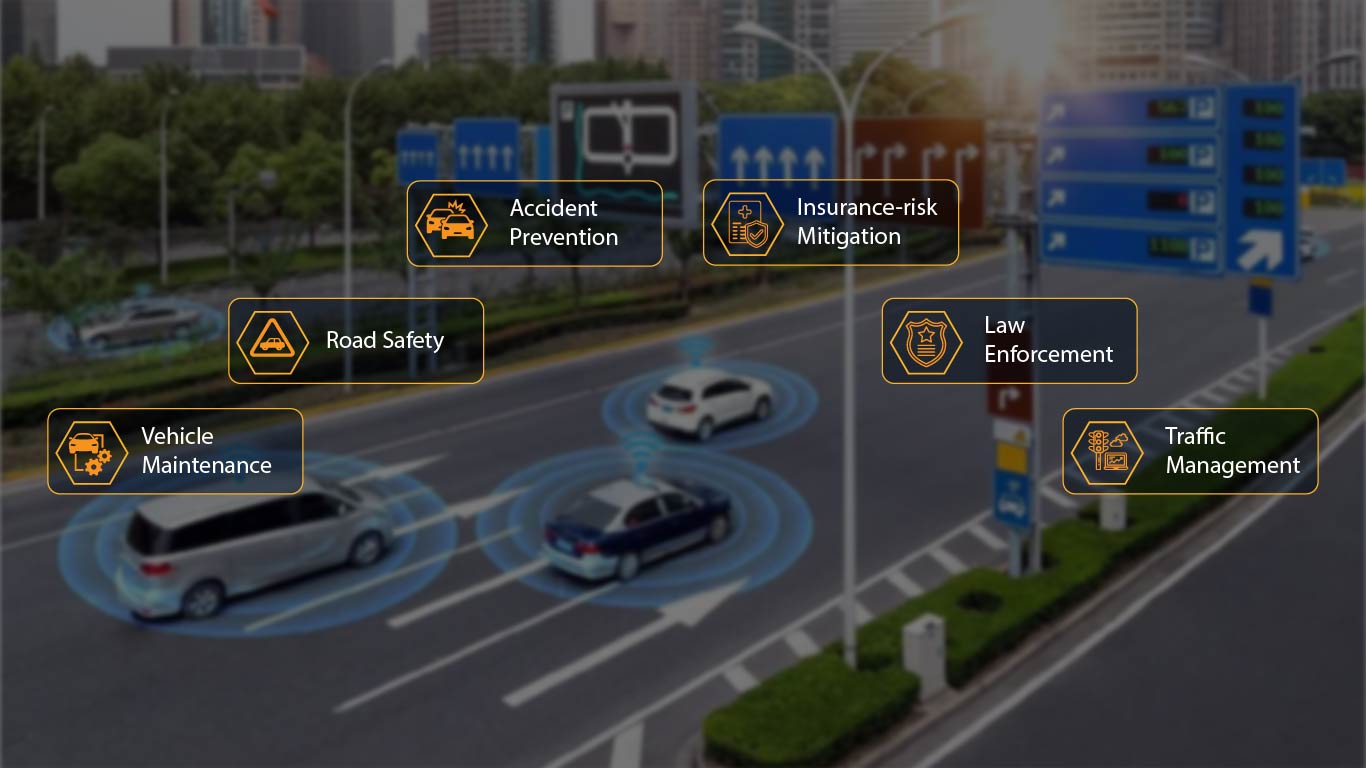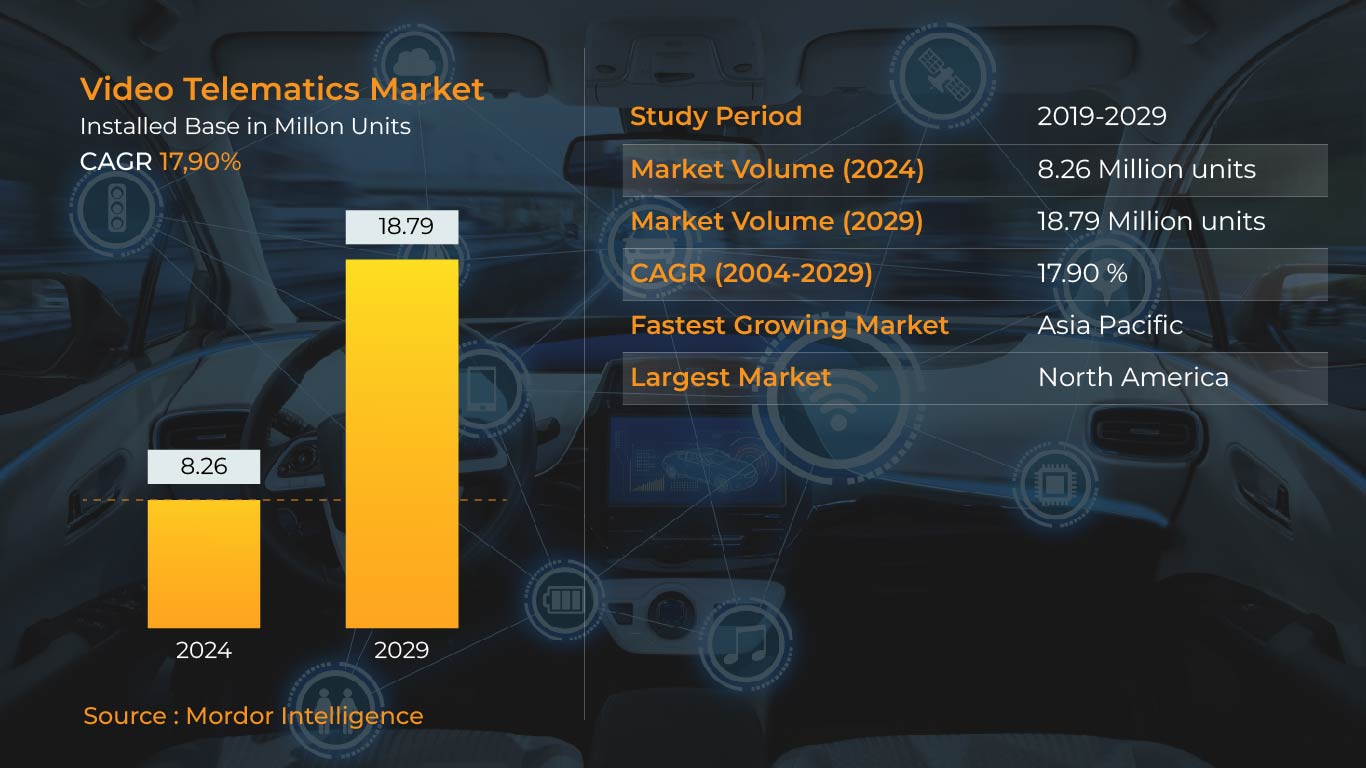Introduction:
The advent of video telematics has revolutionized modern transportation systems, offering unprecedented opportunities for enhancing safety, efficiency, and accountability. This technology, a synergistic blend of video capabilities and telematics systems, has become a cornerstone in various transportation sectors.
The journey from traditional telematics to the incorporation of video technology marks a significant evolution in the field. The integration of video technology with telematics systems has not only expanded the scope of data collection but also enriched the quality of insights derived, thereby amplifying the impact of telematics on transportation.
This Blog aims to delve into the intricacies of video telematics, exploring its evolution, components, functionalities, and applications. An analysis of recent advancements and case studies will shed light on the transformative role of video telematics in areas such as fleet management, road safety, insurance, and law enforcement. Furthermore, the blog will address the challenges faced in implementing video telematics and discuss potential future directions, underscoring the immense potential of this technology in shaping the future of transportation systems.
Advancement Phases of Video Telematics
Video telematics combines video data, vehicle data, and analytics to provide insights into driver behavior and fleet operations. Here's an overview of the key phases in the advancement of video telematics solutions:
1. Early Development (Late 1990s - Early 2000s):
- Initially, video telematics were basic and primarily used for recording road conditions and incidents. These systems used simple dash cameras without much integration with other telematics data.
2. Integration with Telematics (Mid-2000s - Early 2010s):
- Technology evolved to integrate video with traditional telematics data such as vehicle speed, location, and g-force data. This integration helped in better understanding the circumstances around events like accidents.
3. Real-Time Communication and AI Enhancement (2010s):
- With improvements in mobile networks and AI, video telematics systems began to offer real-time data transmission and analytics. AI technologies like machine learning were applied to analyze video feeds in real-time, identifying risky behaviors and providing instant feedback to drivers.
4. Advanced Analytics and Predictive Insights (Late 2010s - Present):
- The latest systems use sophisticated algorithms to predict risky behavior before it leads to incidents. These systems analyze historical and real-time data to provide fleet managers with actionable insights, helping improve safety and operational efficiency.
5. Integration with Autonomous and Semi-autonomous Vehicles (Future Outlook):
- As autonomous and semi-autonomous vehicle technologies develop, video telematics is expected to play a crucial role in enhancing vehicle intelligence, improving decision-making algorithms, and ensuring safety through better situational awareness.

Components and Functionalities of Video Telematics:
- Hardware components: cameras, GPS trackers, sensors, processors.
- Software components: video analytics, data management systems, real-time monitoring.
- Key functionalities: video recording, live streaming, event-triggered recording, GPS tracking, driver behavior analysis.

Advancements in Video Telematics Technology:
- High-definition cameras: enhancing video quality and clarity.
- Artificial intelligence and machine learning: advanced video analytics for real-time insights.
- Cloud-based solutions: scalable storage, remote access, and data management.
- Integration with the Internet of Things (IoT): sensor data fusion for comprehensive monitoring.
- Mobile applications: enabling on-the-go access and management.
Applications of Video Telematics:
- Fleet management: improving driver behavior, route optimization, and vehicle maintenance.
- Road safety: accident prevention, real-time risk assessment, driver training.
- Insurance: risk mitigation, claims management, premium adjustment.
- Law enforcement: evidence collection, traffic management, investigation support.

Case Studies:
- Application of video telematics in commercial fleets: reduced accidents, improved driver behavior, and operational efficiency.
- Implementation of video telematics in public transportation: enhanced passenger safety and security, better route planning.
- Adoption of video telematics in insurance industry: accurate risk assessment, streamlined claims process.
- Use of video telematics in law enforcement: increased conviction rates, efficient traffic management.

Video Telematics Current market:
The video telematics market has been witnessing significant growth globally. According to Mordor Intelligence, the installed base of video telematics is projected to grow from 8.26 million units in 2024 to 18.79 million units by 2029, at a CAGR of 17.90% during the forecast period. Video telematics combines video surveillance and vehicle analytics, using high-resolution linked cameras with specialized sensors. It helps companies record collision evidence, manage driver risk, and enhance security. These systems also include detection sensors for safety features like speed limit violations, stop sign detection, lane-drifting warnings, and forward collision alerts.

Challenges and Future Directions:
- Privacy concerns: balancing surveillance with individual privacy rights.
- Data security: safeguarding video telematics data from unauthorized access and cyber threats.
- Integration with autonomous vehicles: leveraging video telematics for autonomous vehicle development and deployment.
- Standardization and regulation: establishing industry standards and regulations for ensuring interoperability and compliance.
- Future trends: adoption of 5G technology, edge computing, and enhanced AI capabilities in video telematics systems.
Many companies worldwide are currently developing video telematics solutions, among which Bongo IoT Video Telematics stands out. Despite the relatively small size of the local market, Bongo IoT is committed to expanding its business locally and globally.

Conclusion
The significance of video telematics in transforming transportation systems cannot be overstated. As we’ve seen, it has a wide range of applications and has led to numerous advancements in the field. Companies like Bongo IoT are leading the way in harnessing the power of this technology to improve fleet management, road safety, and law enforcement. Despite the challenges, the future of video telematics looks promising, with new trends and technologies on the horizon. As we move forward, it will be exciting to see how video telematics continues to shape the future of transportation.
🌐Discover more
Visit at: https://www.bongoiot.com/video-telematics
WhatsApp (+88) 01322813551
or,
Mail Us: sales@bongoiot.com

